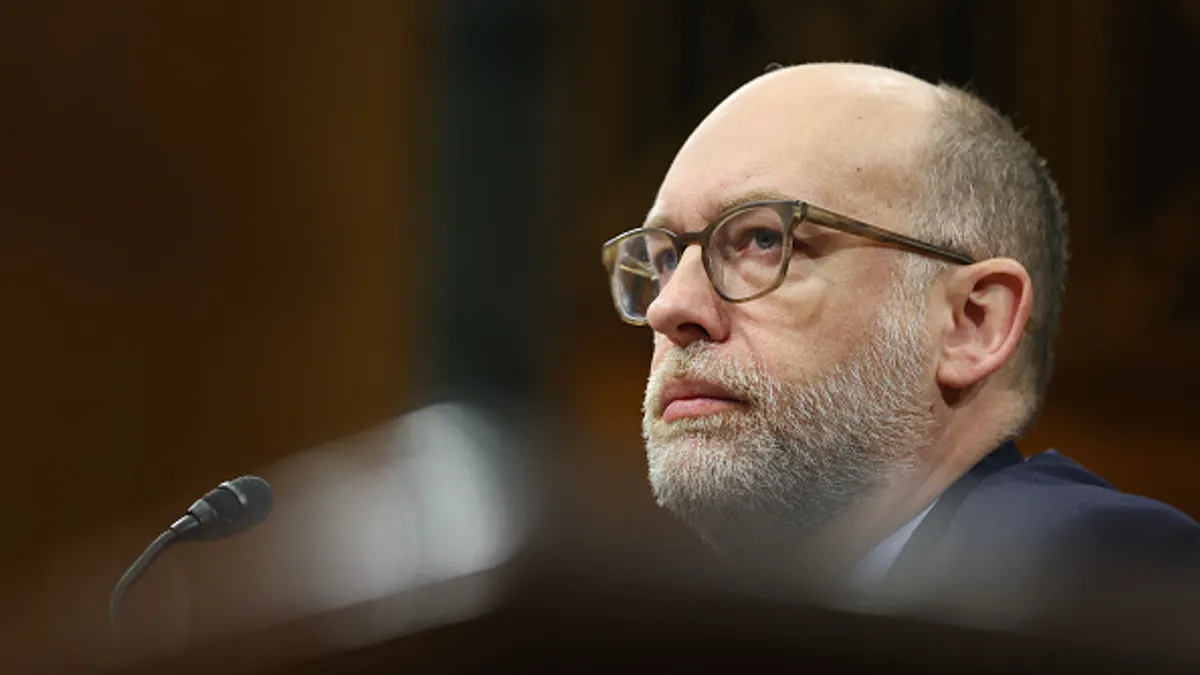Federal agencies must send the Office of Management and Budget biweekly reports starting next week on how much their buildings are occupied as part of an effort to make better use of government facilities, a memo from OMB Director Russell Vought says.
“The Trump Administration is committed to … [shrinking] the Federal real estate footprint to eliminate unused and wasteful Federal office space,” Vought said in an April 21 memo.
The goal is to implement a return-to-office policy Trump ordered on his first day in office and for agencies to meet a minimum 60% weekly average occupancy based on a calculation that assumes each employee gets 150 square feet of space.
OMB doesn’t specify how agencies should track employees but for those that require employees to swipe their ID card as they come in each day, that form of data collection can be used.
“Card data can be collected from the agency's managed turnstiles [or from] card readers used for space access, or both,” says the memo, which rescinds a Biden-era memo on the same matter.
For agencies that aren’t using a badge and access system, they can use a daily check-in survey, occupancy sensors, video analytics, WiFi and Bluetooth aggregators, building automation systems, analytics platforms, reservation systems, visual analysis, timecard analysis and mobile location data, a General Services Administration policy says.
“If agencies do not have an existing technology that can produce accurate and complete occupancy utilization data, agencies are encouraged to review GSA's list of available occupancy technologies and identify those that can be expeditiously and cost-effectively implemented,” the policy says.
Depending on the technology they want to use, agencies must get a security clearance before they can use it to track employees.
“All hardware must be assessed for security risks and approved for connection to the agency’s production network,” the policy says.
The OMB memo goes beyond a law passed in the last year of the Biden administration, called the Utilizing Space Efficiently and Improving Technologies, or the USE IT Act, which sets the 60% occupancy standard and requires GSA to move an agency into a different building or take other steps to address the underuse of buildings.
“The [GSA] Administrator shall, in consultation with the Director [of OMB], take steps to reduce the space of the tenant agency, including consolidating the tenant agency with another agency, selling or disposing of excess capacity space, and adjusting space requirements, as appropriate, for any replacement space,” the law says.
The USE IT Act passed on a largely partisan basis, with most Democrats opposed to it on the grounds it would disrupt the federal workforce to meet what they called an arbitrary occupancy standard.
“This bill would create massive inefficiency by forcing the early termination of government facility contracts to meet an arbitrary and inflexible standard of occupancy,” Rep. Betty McCollum, D-Minn., said at the time.
The USE IT Act applies to what are called CFO agencies – the 24 agencies that are required to have a chief financial officer because of their size – but in his memo, the OMB director is requiring all agencies to meet the 60% threshold.
“This guidance sets the requirement for all agencies to support efforts to eliminate unnecessary space and costs,” Vought says.
Agencies were required to start tracking occupancy earlier this month on May 4. The first reporting deadline is May 19. Full implementation under the USE IT Act begins July 4, but the memo directs agencies to use May 19 as the start of implementation.










